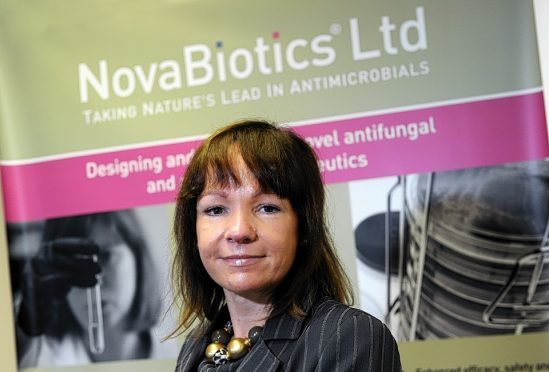An Aberdeen biotechnology company has found one of its core discoveries is able to reverse resistance to antibiotics.
Novabiotics, a private-equity backed drug discovery company, has revealed tests of its technology that show it has the potential to save lives at risk of infections that are increasingly not treatable with antibacterial drugs.
The new data, which was presented at a conference in the US this week, found its formulation of a chemical compound has the potential to “breathe new life into a clinician’s existing antibiotic arsenal”.
The treatment, which was developed as part of Novabiotic’s drug for Cystic Fibrosis (CF), has been shown to act as a “resistance breaker” to a number of antimicrobes, including coliston – considered to be the “antibiotic of last resort” for humans against infections such as E. coli.
Scientists have warned the world is on the cusp of global crisis in antibiotic resistance. So called “superbugs”, which are resistant to anti-microbials, are already estimated to account for 700,000 deaths each year. A report on anti-microbial resistance published in March estimated 10million people could die each year of drug resistant infections unless something was done to combat the threat.
The report on Novabiotics’ formulation of the cysteamine chemical compound, called Nylexa, was presented in Boston at the ASM Microbe conference, the largest gathering of microbiologists in the world whose key note speech was delivered by billionaire Bill Gates, founder of Microsoft and the co-chair of the Bill & Melinda Gates Foundation.
Dr Deborah O’Neil, chief executive of NovaBiotics, said: “We have previously shown that cysteamine can increase the sensitivity of pathogens to a broad range of clinically relevant antibiotics and reverses resistance in CF. Today’s data shows that this molecule has a much broader utility, as an adjunct antimicrobial for multiple drug resistant (MDR) bacterial infections.
“We believe resistance breakers, like Nylexa and other forms of cysteamine have the potential, in the shorter term, to breathe new life into a clinician’s existing antibiotic arsenal, extending their utility and thereby saving lives.”
The Craibstone-based Novabiotics is a spin-out from research at Aberdeen’s Rowett Institute. Founded by Ms O’Neill in 2004, the firm is advanced in developing antifungal and antibacterial therapeutics. The leading biotechnology business is backed by more than £17million in private-equity finance, including £5million from Woodford Investment Management in January.
She added: “For the longer term, we will continue to develop our antibacterial and antifungal therapies, Novamycin and Novarifyn, against which resistance development is highly unlikely.”










